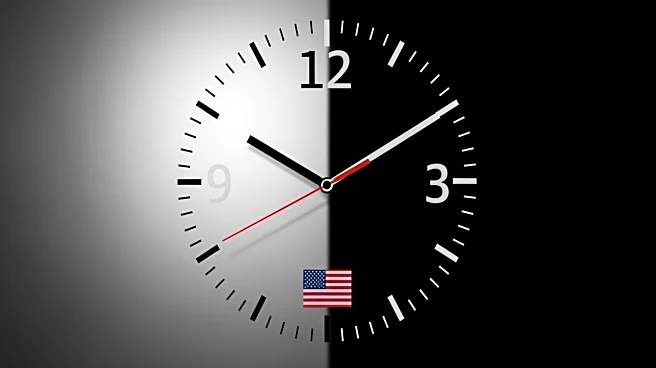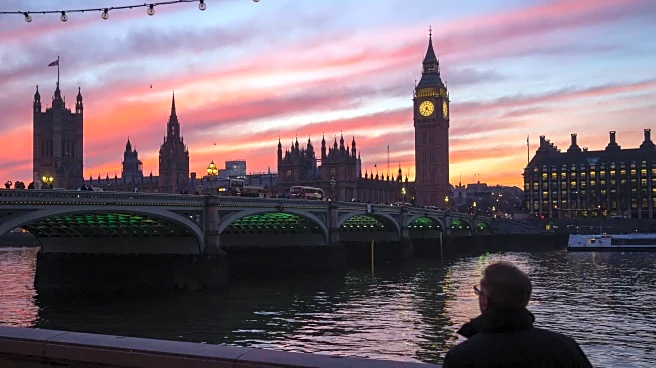What's Happening?
For one week every October, the time difference between the United States and Europe is temporarily reduced by one hour due to differing schedules for daylight saving time adjustments. In Europe, clocks are set back one hour on the last Sunday of October, while
in the United States and Canada, this change occurs on the first Sunday of November. This discrepancy can lead to confusion in scheduling international meetings and calls, as the usual time difference between locations such as London and New York is altered. The practice of daylight saving time, which involves setting clocks forward in March and back in the fall, was first adopted during World War I to conserve energy. Despite efforts to standardize the practice, the timing of these changes remains uncoordinated between Europe and North America.
Why It's Important?
The temporary shift in time difference can have significant implications for international business and communication, as it affects the coordination of meetings and deadlines across the Atlantic. This period of misalignment can lead to scheduling errors and missed appointments, impacting businesses and individuals who rely on precise timing for operations. The ongoing debate over the benefits of daylight saving time highlights the complexity of balancing energy conservation with the practical challenges it poses. In the U.S., there have been legislative efforts to make daylight saving time permanent, reflecting a desire to simplify timekeeping and reduce confusion.
What's Next?
While there have been proposals in both the U.S. and Europe to eliminate the biannual clock changes, no definitive action has been taken. In the U.S., a 2022 Senate measure to make daylight saving time permanent did not advance, leaving the current system in place. As discussions continue, stakeholders in various sectors may advocate for changes that could streamline timekeeping and reduce the disruptions caused by the current system. Any future changes would require careful consideration of the impacts on international coordination and energy usage.
Beyond the Headlines
The debate over daylight saving time also touches on broader cultural and historical aspects, as the practice has evolved from its wartime origins to a modern-day convenience. The potential elimination of time changes could lead to a reevaluation of how societies structure their daily activities and manage energy consumption. Additionally, the issue raises questions about the role of government in regulating time and the balance between tradition and efficiency in modern life.















